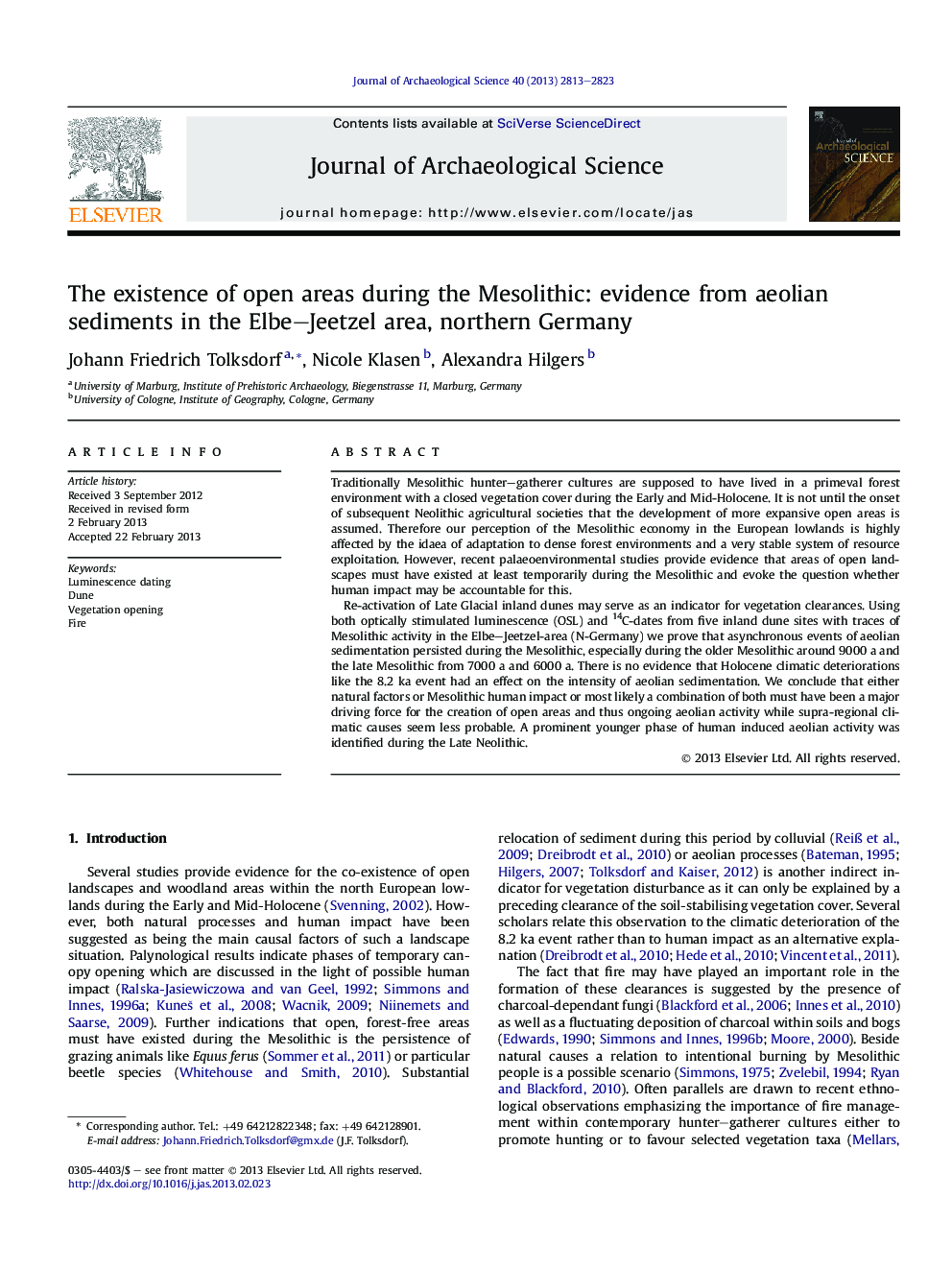| کد مقاله | کد نشریه | سال انتشار | مقاله انگلیسی | نسخه تمام متن |
|---|---|---|---|---|
| 1035480 | 943851 | 2013 | 11 صفحه PDF | دانلود رایگان |

Traditionally Mesolithic hunter–gatherer cultures are supposed to have lived in a primeval forest environment with a closed vegetation cover during the Early and Mid-Holocene. It is not until the onset of subsequent Neolithic agricultural societies that the development of more expansive open areas is assumed. Therefore our perception of the Mesolithic economy in the European lowlands is highly affected by the idaea of adaptation to dense forest environments and a very stable system of resource exploitation. However, recent palaeoenvironmental studies provide evidence that areas of open landscapes must have existed at least temporarily during the Mesolithic and evoke the question whether human impact may be accountable for this.Re-activation of Late Glacial inland dunes may serve as an indicator for vegetation clearances. Using both optically stimulated luminescence (OSL) and 14C-dates from five inland dune sites with traces of Mesolithic activity in the Elbe–Jeetzel-area (N-Germany) we prove that asynchronous events of aeolian sedimentation persisted during the Mesolithic, especially during the older Mesolithic around 9000 a and the late Mesolithic from 7000 a and 6000 a. There is no evidence that Holocene climatic deteriorations like the 8.2 ka event had an effect on the intensity of aeolian sedimentation. We conclude that either natural factors or Mesolithic human impact or most likely a combination of both must have been a major driving force for the creation of open areas and thus ongoing aeolian activity while supra-regional climatic causes seem less probable. A prominent younger phase of human induced aeolian activity was identified during the Late Neolithic.
► Aeolian (re)activation occurred during the Mesolithic period.
► No connection to supra-regional climatic trends.
► Result of human impact or local natural forces?
Journal: Journal of Archaeological Science - Volume 40, Issue 6, June 2013, Pages 2813–2823